PISTILS-STAMENS series
from 2012
It is unseemly for a contemporary artist to paint flowers. This is a subject for amateurs, housewives and children’s drawing hobby groups. Flowers migrated ages ago from exhibition halls to postcards, wallpaper and dresses. To paint them means to assume the risk of being accused of bourgeois tastes, sentimentality and levity. Of striving for thoughtless decorativeness and easy commercial success. To paint flowers today means going against the flow, violating the professional convention and jeopardizing the reputation of a serious author.
Marina Koldobskaya assumes the risk – she paints flowers by series and dozens, covering bundles of paper and rolls of canvas with flower arrangements, flower beds and entire meadows in bloom. Exhibited together, these works transform an artist’s studio or a gallery hall into the semblance of the Garden of Eden, tropical thickets or datura plantations. The flowers series is yet another step of the artist on her way to the origins, the paradise lost, simplicity, purity and the self-forgetful delight in an act of creation. To what has been rejected, lost and almost forgotten by the contemporary art.
The flowers of Koldobskaya are painted simply – it would seem, simply to the last degree. A few energetic lines; a few bright splotches; a background established with a few broad brushstrokes. A few placard colors. Black-white-red, blue-gold – the heraldic laconism of a palette. One flower, three flowers, lots of flowers – the archaic elemental of reckoning. A rectangular, a triangular, a circle, an oval – the mathematical clarity of composition. Anthropomorphic shapes that sprout through the flowers – vaginas and phalluses, eyes and teeth, hands and hair – the heathen frankness of subject.
It is impossible to call Koldobskaya’s paintings primitivist – an observant viewer will discern in this calibrated simplicity the rigidity of a designer sign, the strictness of graphic formulas of Russian avant-garde, the aggression of a totalitarian poster and the magic rhythm of tribal ornaments.
The illusion that a painting is created easily and quickly is dispelled when you take it in your hands – it is heavy due to multiple layers of paints. The visible simplicity of a solution is a result of dozens of variations discarded by the artist. The work is not a burden to her – by combining circles and triangular, balancing flowery masses, playing with textures, feasting her eyes on smudges, brushstrokes and burrs, the artist effects a therapeutic act in order to achieve the only thing that is worth the work – Joy.
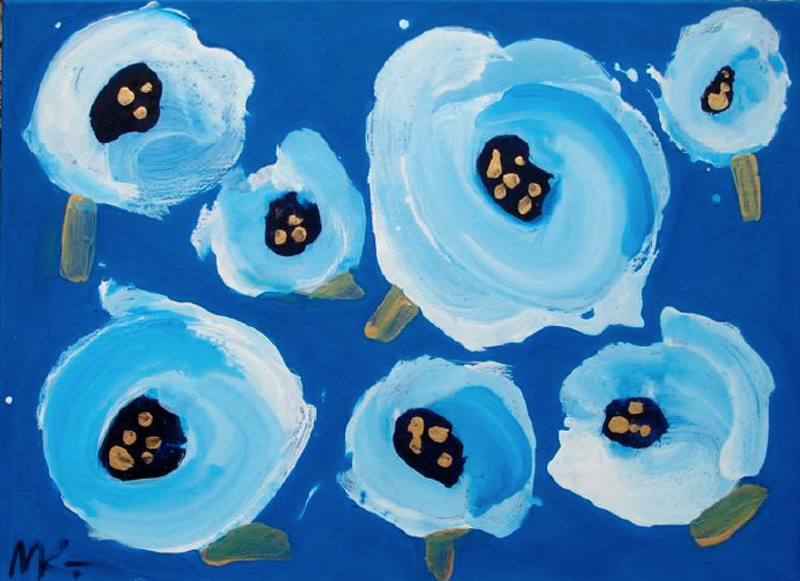
Blue Field, 2012, acrylic / paper on canvas, 61×86 cm
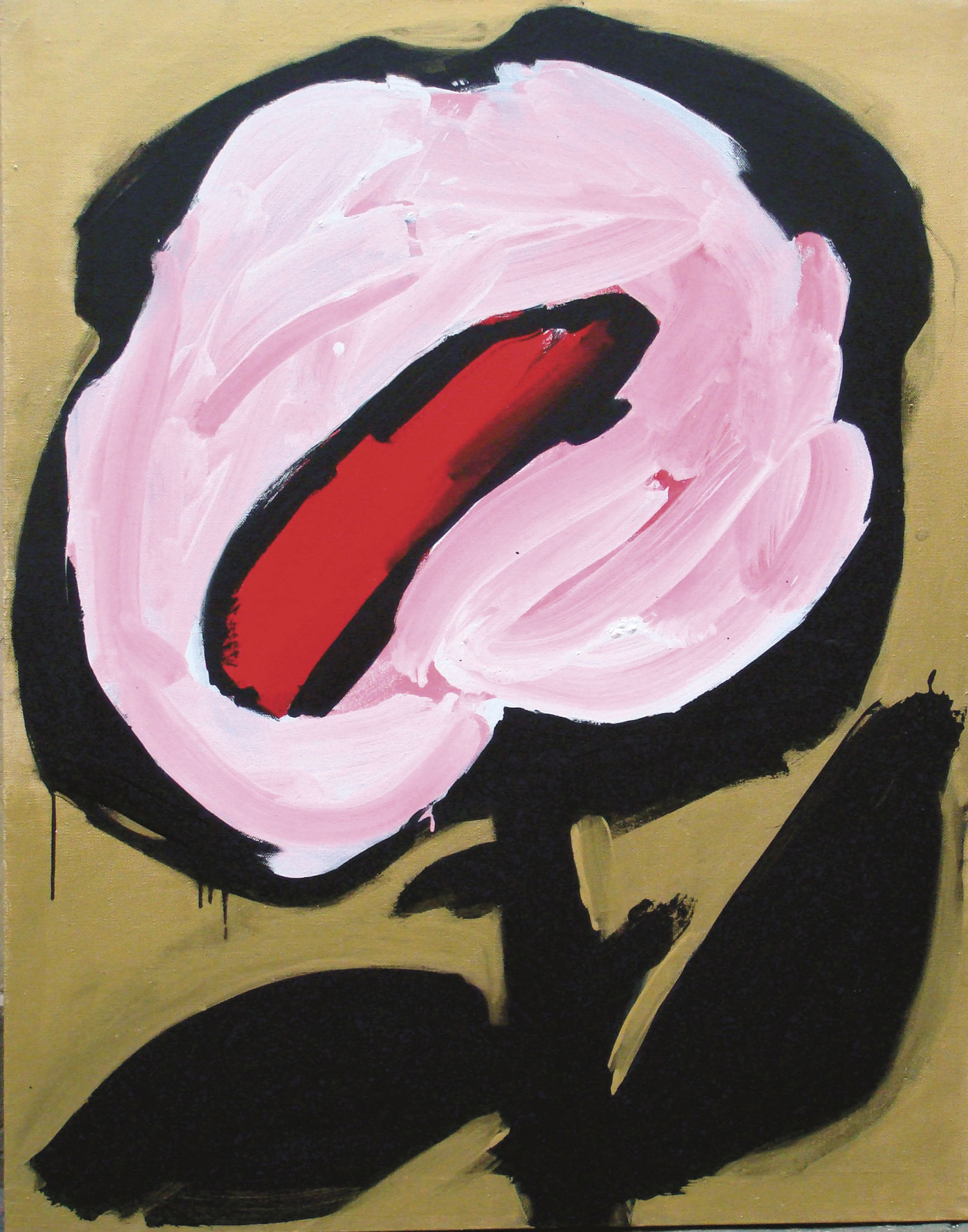
Big Rose, 2012, acrylic on canvas, 140×110 cm
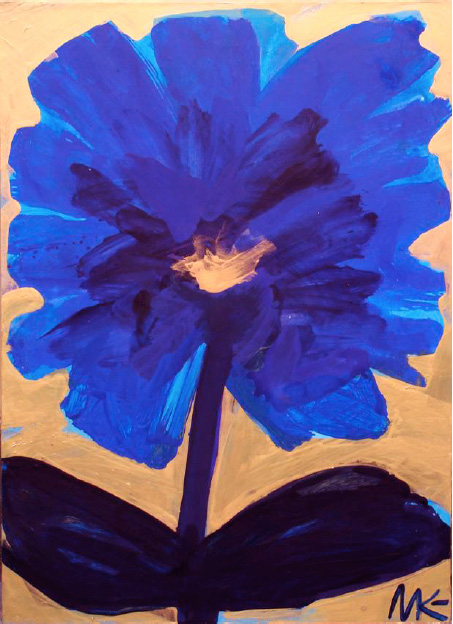
Cornflower, 2014, acrylic/paper on canvas, 80×60 cm
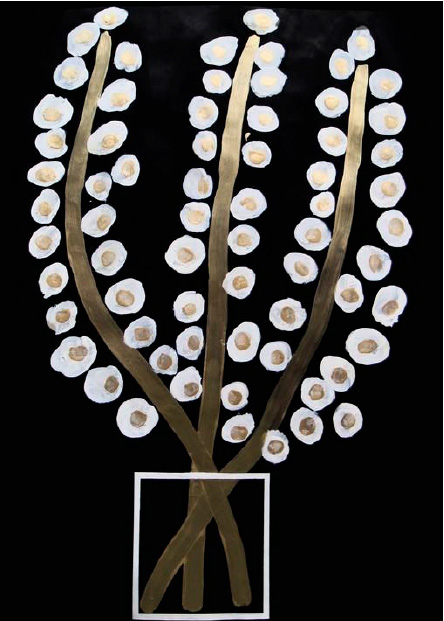
Orchids in Glass, 2013, acrylic/paper on canvas, 86×61 cm
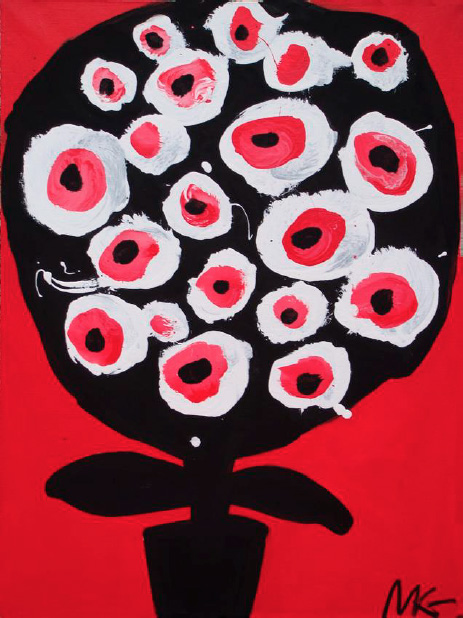
Rosebush, 2013, acrylic/paper on canvas, 80×60 cm
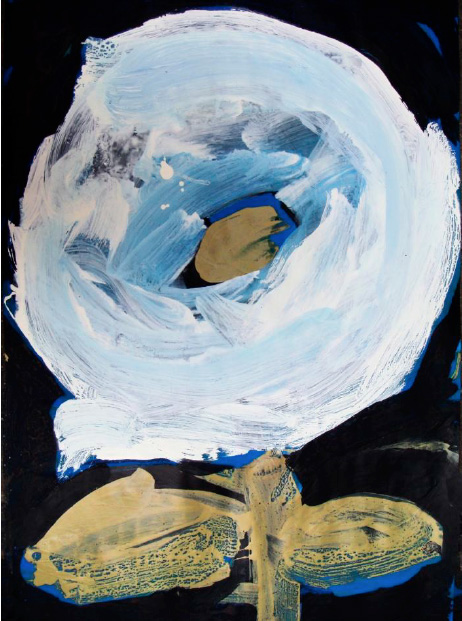
Rose Which Blossom in the Night, 2012, acrylic on paper, 86×61 cm
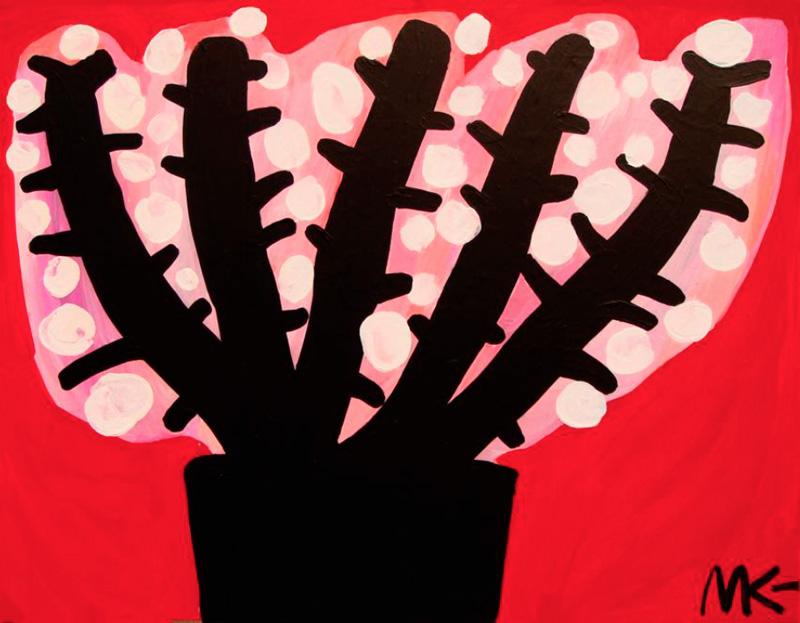
Branches, 2014, acrylic / paper on canvas, 60×80 cm
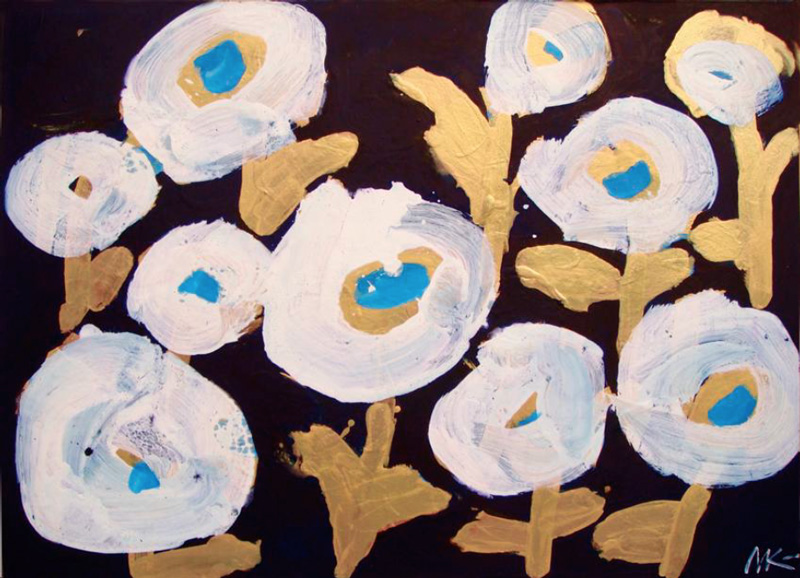
Night Field, 2013, acrylic / paper on canvas, 61×86 cm
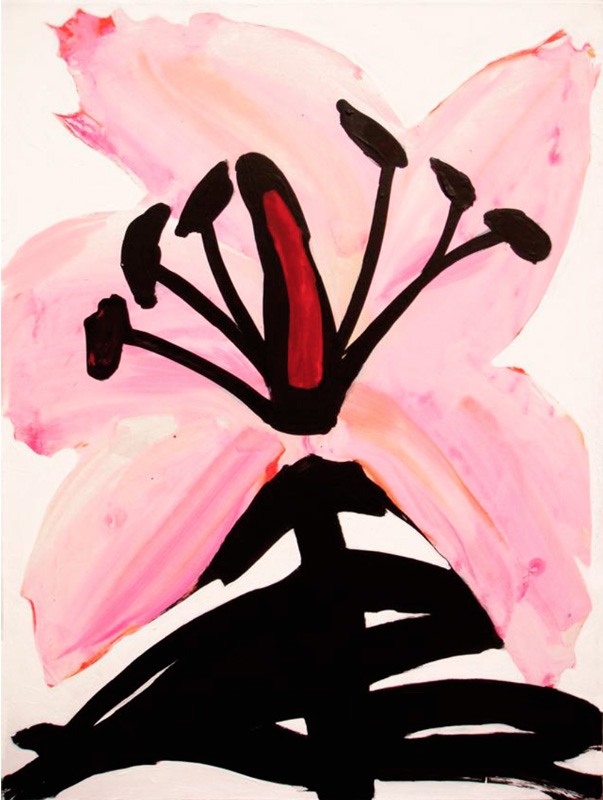
The Lily, 2014, acrylic / paper on canvas, 80×60 cm